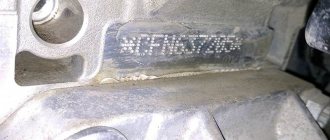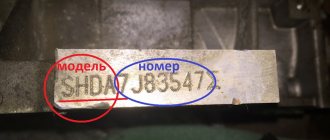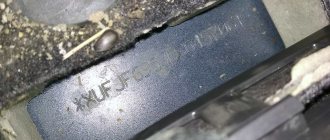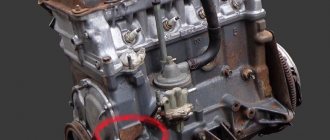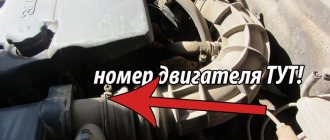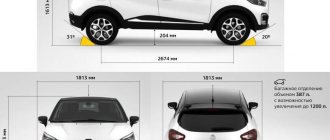Brief description of Renault Captur
Renault Kaptur was first presented to the public on March 30, 2016. Its sales started in June 2021. It resembles the Renault Captur only in appearance. The cars even have different underpinnings. The Kaptur is built on the Dacia B0 platform, which was previously used for the Renault Duster, and the Captur is based on the Renault Clio hatchback.
Renault Kaptur received increased body dimensions, unlike its European counterpart. It also has more ground clearance. This improved cross-country ability on poor and snowy roads. The Kaptur's upholstery is made from cheaper materials.
Renault Captur
In 2021, the Renault Kaptur was restyled. Changes affected the appearance and interior. The amount of chrome on the front grille and wheel rims has increased. A new power unit appeared under the hood. Changes in the interior affected:
- steering wheel;
- central tunnel;
- instrument panels;
- integrated ambient lighting.
Updated Renault Captur
Renault Captur where is the vin number
I found a complete list of Captur checks on one forum, printed it out and went with it to the car dealership to pick up the car. A lot of time was wasted, but I slept peacefully, then I knew that the purchase was in good order, but I gave the managers a lot of trouble, when I left, I’m sure they crossed themselves. In general, here is a list, may its creator forgive me for copying, I’m trying to help beginners, nothing more.
1. Check the data from the PTS (Passport of the Technical Equipment) with the real ones: a. VIN; How to find the VIN (should be similar to other Renault cars, if there is new information, please report it in the topic) 1. Move the passenger seat forward all the way. 2. Underneath it (at the feet of the rear passenger) there is a window marked (cut) on the carpet. Let's tear it apart. There is a foam mat under it - we move it back (towards the trunk). 3. We see the VIN.
b. Body number (identical to VIN); c. Engine number.
2. Check the paintwork - it should be uniform and uniform (must be done in natural daylight), to detect possible traces of body touch-up/repair. a. Check for chips/scratches on the thresholds; b. Check for chips/scratches on the back parts of the side mirrors; c. Check for chips on the edges of the doors, hood and trunk;
3. Do a basic external inspection of the car (without opening the doors): a. Inspect the body from different angles for dents (it is better to do this while moving away from the car); b. Check the doors, hood and trunk: they should not protrude/stick out beyond the body, and the openings (slots sealed with rubber) should be smooth, i.e. have a constant width around the entire perimeter. The hood and trunk lids should not be skewed; c. Check the evenness of the interface lines of the hood and trunk lid (it is better to do this while crouching in front/behind the car); d. Check the bumpers and the plastic parts installed on them for chips and cracks. Carefully inspect the lower edges of the bumpers - you can often find chips, signs of damage and/or repairs there (this is best done on your knees).
4. Check all doors one by one for free opening and closing - they should open and close with the same force;
5. Check for cracks/chips on the glass, including the edges;
6. Check the reliability of closure and freedom of opening of the hood;
7. Check the reliability of closure and freedom of opening of the trunk using a lever and a key;
8. Open the trunk, raise the luggage compartment floor and check for: a. Spare wheel and subwoofer (if included) and secure fixation; b. Jack, wheel wrench c. nets in the trunk
9. Check the operation of the trunk light bulb;
10. Check the operation of the central lock;
11. Check the closing/opening of the front doors and the rear door with a key (card);
12. Check the operation of the power windows on all doors from the driver's door (4 keys and a lock button), and then do the same on each door separately using an individual switch. Make sure that the driver's door lock for all power windows works. In both cases, lower the glass all the way down. Everything should run smoothly;
Popular motors
The base engine for the Renault Kaptur is considered to be the H4M. The motor is installed on the car before and after restyling. The engine has an aluminum cylinder block. Its design involves cast iron liners with an open cooling jacket. The cylinder head contains 16 valves without hydraulic compensators, driven by a timing chain drive.
H4M powertrain
Another popular engine in the pre-restyling Renault Kaptur is the F4R engine. The power unit has more power than the base internal combustion engine. The engine cylinder block is cast from cast iron. There is no need to adjust the thermal clearance of the valves on the F4R, since the design provides hydraulic compensators. The engine is sensitive to the octane number of the fuel and often goes into detonation mode, which destroys the pistons and piston rings.
Motor F4R
After the restyling of the Renault Kaptur, the H5Ht engine began to gain popularity. This is the most modern engine used on Captur. It features an aluminum block with plasma-coated steel instead of the outdated cast iron liners. The engine is equipped with a turbocharger with an electronic wastegate and a variable displacement oil pump.
H5Ht powerplant
What engine is on the Captur?
For the buyer, the developers have identified two main engine options for the Renault Kaptur: the first H4M-HR16DE with a volume of 1.6 liters and a power of 114 hp. With. and a two-liter F4R with 143 horsepower.
The 1.6 power option is an economical unit, adjusted to the Euro 5 standard, which can digest 92 gasoline. A feature of the naturally aspirated engine is the use of a chain in the gas distribution mechanism, thanks to which the chances of a break will be minimal.
However, over time, the chain may stretch and begin to make an unpleasant sound. Each of the four cylinders has a pair of injectors. The engine is equipped with an updated variable valve timing system, which involves installing a phase shifter directly on the exhaust shaft.
In addition, there is no hydraulic compensator, which forces the valve to be adjusted from time to time, approximately every 80-100 thousand mileage. The Captur 1.6 engine is a very good unit for a wide audience, although it does not quite fit into the dimensions of a car that is not at all as small as it is positioned to be.
Engine 114 hp. With. consumes 8.9 liters in the city and 6.9 in mixed mode. On average, a car accelerates to hundreds in 12.5 seconds. The base 1.6-liter unit is paired with a 5-speed manual transmission. For an additional fee, you can install a CVT with seven quasi-gears. This engine is installed only on front-wheel drive cars.
Which engine is better to choose Renault Kaptur
If you are on a limited budget, it is recommended to choose the Renault Kaptur with the H4M engine. The engine has repeatedly proven its reliability in many Renault cars. The power unit has a simple design and is easy to maintain. A special feature of the engine is the presence of two injectors for fuel injection into each cylinder.
Engine H4M
If you want to have a car with an engine that does not require adjustment of the thermal valve clearances, it is recommended to choose the Renault Kaptur with the F4R power unit. The cast iron engine cylinder block provides a large margin of safety and excellent service life. The power plant easily overcomes the 400-500 thousand km mark. Another advantage of the internal combustion engine is the absence of problems with finding new and used spare parts.
F4R powertrain
Still, the best choice would be the Renault Kaptur with the H5Ht engine. The engine outperforms all other power units, which is confirmed by the power and speed characteristics of the internal combustion engine. However, the sensitivity of the engine to fuel quality should be taken into account. Also, the engine does not like violation of maintenance regulations.
H5Ht engine and comparison of its characteristics with the F4R engine
Engines and gearbox Renault Kaptur (Renault Captur)
Renault Kaptur has been in production since 2021. For the compact crossover, the French automaker chose naturally aspirated gasoline engines of 1.6 and 2.0 liters. These are structurally simple units labeled H4M-HR16DE, F4R with a capacity of 114 and 143 hp. With. respectively. They were chosen for a reason: the operation of diesel engines in Russia is difficult due to the low quality of diesel fuel, special climatic conditions, and there is no trust in small-volume turbocharged engines. Therefore, the manufacturer decided to give preference to power plants that have already proven themselves in other models.
The Renault Duster base was used as a platform. As for gearboxes, here the buyer has the right to independently choose between mechanics, classic automatic transmission and CVT. In terms of technology, the Kaptur is in many ways similar to the base Captur model, although it differs in body size and ground clearance. The smaller Captur is equipped with 0.9 and 1.2 liter petrol engines, as well as the popular 1.5 dCi with the K9K marking.
Engine reliability and their weaknesses
The weak point of the F4R engine is its timing belt drive. The belt often fails before its intended service life. The teeth become discolored, which leads to a violation of the timing phases. Sometimes the belt breaks. All this leads to the pistons hitting the valves, which results in a major overhaul.
Timing belt drive
Renault Kaptur power units suffer from oil leaks through oil seals and gaskets. The only exception is the H5Ht motor, since it has just begun to be installed on the car and is not very old. Oil leaks on H4M and F4R engines lead to a decrease in lubrication levels. Oil starvation causes increased stress on friction pairs and can cause scoring.
Traces of oil
The F4R engine uses a crankshaft damper pulley to drive attachments. At mileage of 120-140 thousand km it is destroyed. This causes local overheating of the crankshaft, which can cause damage to the timing belt. Therefore, it is recommended to change the attachment pulley in a timely manner to prevent serious consequences.
Broken crankshaft pulley damper
Renault Kaptur engines without hydraulic compensators require timely adjustment of the valve thermal clearance. Otherwise, carbon deposits will form on the seats. It does not allow the valve to take its place. To fix the problem, lapping is required. Incorrect thermal clearance leads to:
- loss of compression;
- deterioration of car dynamics;
- increased fuel consumption;
- the appearance of extraneous sounds during engine operation.
Carbon deposits on valves
Carbon deposits also form on the pistons. The reason for its appearance is low quality fuel, the use of bad oil or violation of maintenance intervals. Carbon deposits can cause coking of the piston rings. As a result, an oil reservoir will appear, increased consumption and deterioration in dynamics.
Coking of piston rings
Renault Kaptur – One letter decides everything Used car reviews
I like the French for their charm. Renault, of course, is simpler in this regard, but the compact crossover Kaptur, matching the mentality, turned out to be extravagant and very non-trivial, for some even menacing. No wonder, because Capturer means “invader” in French.
Why did they change the name for us to Kaptur? Yes, if he were Captur, our people would certainly call him “Sartir”, without thinking about whether he had any weak points at all. But the marketers did not make a mistake and simply replaced the first letter. And what is its essence? Which Kaptur is on the used car market: dirty or menacing, a toilet or an invader?
Maintainability of power units
The F4R engine has the best maintainability. The engine has a cast-iron cylinder block, which is little susceptible to deformation and can be restored by boring when overhauled. The F4R engine is often found not only in Renault Kaptur, but also in other cars. Therefore, the engine has no problems finding new and used spare parts.
Despite the aluminum cylinder block, the H4M power unit has good maintainability. This is facilitated by the simplicity of the motor design. The engine is familiar to most car service technicians. Many repairmen have successfully mastered relining, restoring the engine to 90% of its original life.
Engine overhaul
Only the H5Ht engine cannot boast of good maintainability. The motor has just appeared on cars, so most car repair shops are reluctant to undertake repairs. The H5Ht electronics also complicate repairs. Spare parts for the power unit are not very common, but you can still find them.
Engine tuning
Chip tuning of H4M and F4R power units is ineffective. The power increase is usually 2-10 hp. On the stand these indicators are easy to notice, but on the road they are not felt. Therefore, for these engines, flashing the ECU must be done in conjunction with other boost methods.
The H5Ht engine is great for chip tuning. The manufacturer has strangled it to comply with environmental standards. Reflashing the ECU allows you to unlock your potential. Chip tuning helps to more accurately tune the turbine. It should be taken into account that due to the newness of the engine, not all specialists are able to reflash it well.
Surface tuning works well on H4M and F4R engines. A zero-flow air filter, forward flow and lightweight pulleys allow for a noticeable increase in power. This type of tuning is not recommended for H5Ht. This engine requires precise tuning, so superficial tuning can put the internal combustion engine into emergency mode or significantly shorten its service life.
On the H4M and F4R engines, installing a turbine works well. Ready-made turbo kits are available for sale. With their help, it is possible to increase power by 10-25%. Correct selection of a turbine does not significantly affect the service life of the engine.
For more noticeable results, deep tuning is required. It involves a complete overhaul of the internal combustion engine with the replacement of some parts with stock ones. The F4R engine has a cast iron cylinder block with a large margin of safety. Therefore, this motor is most suitable for boosting. Its power can be increased 2-5 times if desired.
Source

